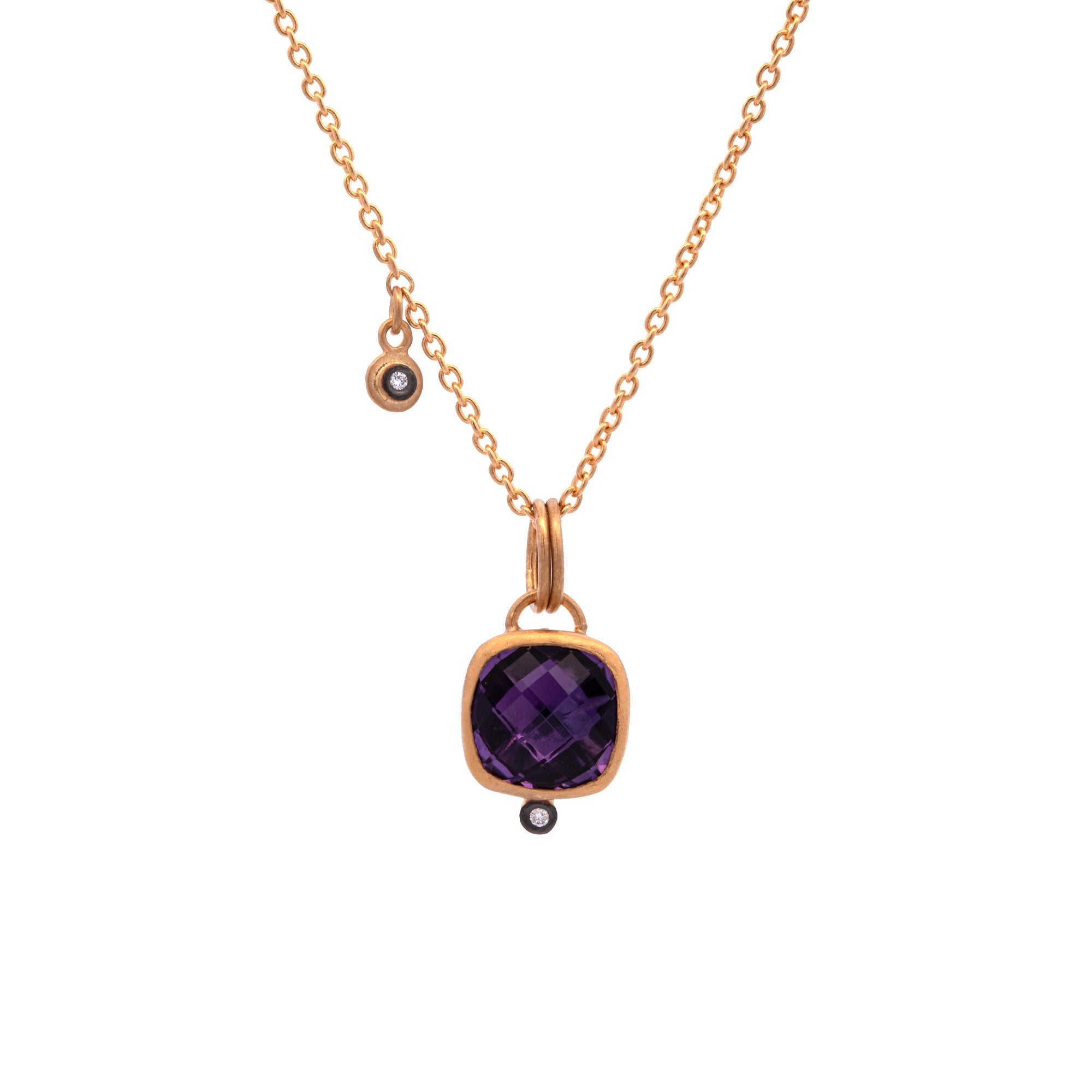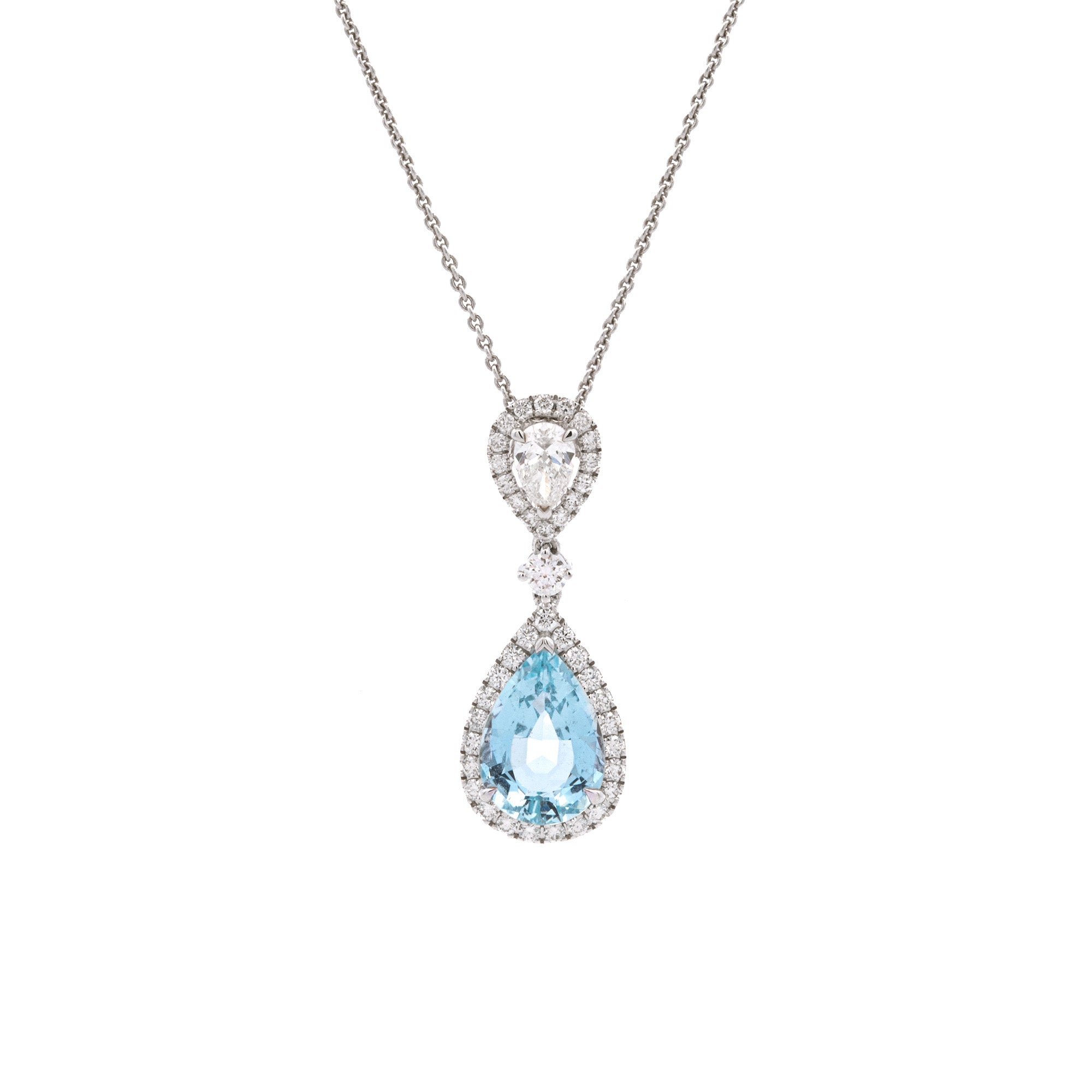January - March 2025
From Our Gemologist
The first question we ask ourselves is why? Why have humans throughout millennia coveted diamonds and gemstones. Rarity. Beauty. They come from the earth – they mesmerize us.
You may not realize what the first thing that draws you to a gemstone is… but, the very first impression a gemstone makes on you is its color. How does the color affect you? Color is THE most important aspect of a gemstone. It is the lure.
So, in this vast and wondrous world of gems … We cherish the big three first and foremost; there is nothing more alluring than a Burmese Ruby, Kashmir Sapphire, or Colombian emerald. These are the most compelling triumvirate – and are Red, Green and Blue – the primary colors. They are the most valuable gems on earth.
Birthstones
Garnet - January Birthstone and 2nd Anniversary, 6.5 to 7.5 on the Moh’s Scale of hardness
January is such a lucky month to be born in, as it’s birthstone, garnet, is a truly exceptional gemstone. Keeping in mind that color is the most important factor in assessing and admiring gemstones, garnet has it all. It comprises a diverse group of minerals, some with unfamiliar names but the red, green, yellow, purple, orange and brown range of colors in this gem group is impressive. You may have heard of rhodolite, a beautiful stone that has purplish-red hue or tsavorite, a green gem that rivals the color of emerald.
The name garnet comes from the Latin ‘granatus’ meaning pomegranate, as garnets resemble the seeds of this delectable fruit. It is one of the earliest gems used in jewelry making; for example, a red garnet bead necklace dating back 5,000 years in addition to many pieces of jewelry and ornamentation found in the ancient Egyptian tombs. It was also believed that wearing garnet will protect the wearer from harm. In Roman times, it was garnet that was cut into an Intaglio and used by emperors to emboss their seal with wax onto important documents - something to consider as we see the trend of signet rings return today.
Red garnets were favored in Victorian era jewelry and mined from what is now the Czech Republic. Garnets are thought to be connected to the heart, love, life, and friendship, and are found in many crown jewels from monarchies around the world.
Beautiful green stones include tsavorite and demantoid. Prices can be quite high for these two gems in larger sizes as they are rarer. Tsavorite was first mined near Tsavo National Park in Kenya, it can be colorless to light to bluish green with a vibrancy similar to emerald but inclusions are not as apparent. Demantoid can also be a vibrant green or may have what are known as horsetail inclusions which collectors love to find; they lend wisp-like lines of golden-brown hues so the green stone appears almost like a hazel eye. Hessonite is a lovely slightly orange brown stone whose wavy inclusions are said to look like a scotch and water.
Garnets typically have vibrant and saturated color and are cut into many styles and sizes thus a beautiful addition to any jewelry collection.


Amethyst - February Birthstone and 6th and 17th Wedding Anniversary, 7 on the Moh’s Scale of hardness
If asked which gemstones are purple, the first one most people will think of is amethyst. Although tanzanite and sapphire can also be considered purple, amethyst has been the predominant purple stone for millennia because of its deeply saturated, velvety purple color. It is in the quartz family and is fairly durable. It can vary from a pale lilac hue to a deeply saturated reddish purple. Although it is now plentiful it was once as rare and as besotted as emerald or ruby. Its name comes from “amethystos” meaning ‘not drunk’ in Ancient Greek, it was thought to ward off intoxication, keeping its wearer clear-headed, as its purple color was likened to wine and associated with Roman god Bacchus.
It has been found in jewelry dating back 2,000 years, but was first mined in Russia where it immediately became popular in royal circles due to its deep reddish-purple, regal, color. Large deposits were discovered in Brazil in the 19th century which made it more plentiful and accessible. Amethyst can be found in large geodes and collectors and gem enthusiasts enjoy these pieces as decoration. The crystals can be very large which allows jewelry designers to get creative with it and make striking pieces of jewelry from cabochons to step-cuts to freeform cutting and carvings.
Its abundance and diversity in sizes makes it a desirable, valuable, and affordable gem. An amethyst can withstand years of wear and it a stone is to be treasured.
Aquamarine - March Birthstone and 19th Wedding Anniversary, 7.5 to 8 on the Moh’s Scale of hardness
Aquamarine, Latin for the ‘color of seawater’, has been likened to the colors of the sea for millennia and is believed to protect mariners. It is part of the beryl family which includes emerald and morganite. Aquamarine is often eye-clean with few inclusions whereas emerald, also a beryl, is prone to many natural inclusions and fractures. One reason for this difference is how they grow, but mostly it is because emerald has trace elements of chromium and vanadium whereas trace elements of iron are found in aquamarine.
Aquamarine is formed in mineral rich rock, in six-sided cylinder-like prisms, allowing for larger sized cut stones. Many notable aquamarines are large step-cuts and made into impressive suites of necklaces, bracelets and earrings. If you love big and bold cocktail rings, search for an aquamarine. Beautiful oval cuts define elegance when mounted within a halo of diamonds either in rings, studs or drop earrings. When searching for an aquamarine piece, follow auction houses and estate jewelers where bold and exquisite examples of this stone can be found.
The most valuable aquamarines are medium blue color with less green in them. They can be heat-treated to enhance the blue and minimize the green. Desirability though is in the eye of the beholder and many consumers find the slightly greenish blue more striking.
Aquamarine is found in many places around the world, one significant source was Minas Gerais in Brazil and at high altitudes like the Karakorum Range in Pakistan.

